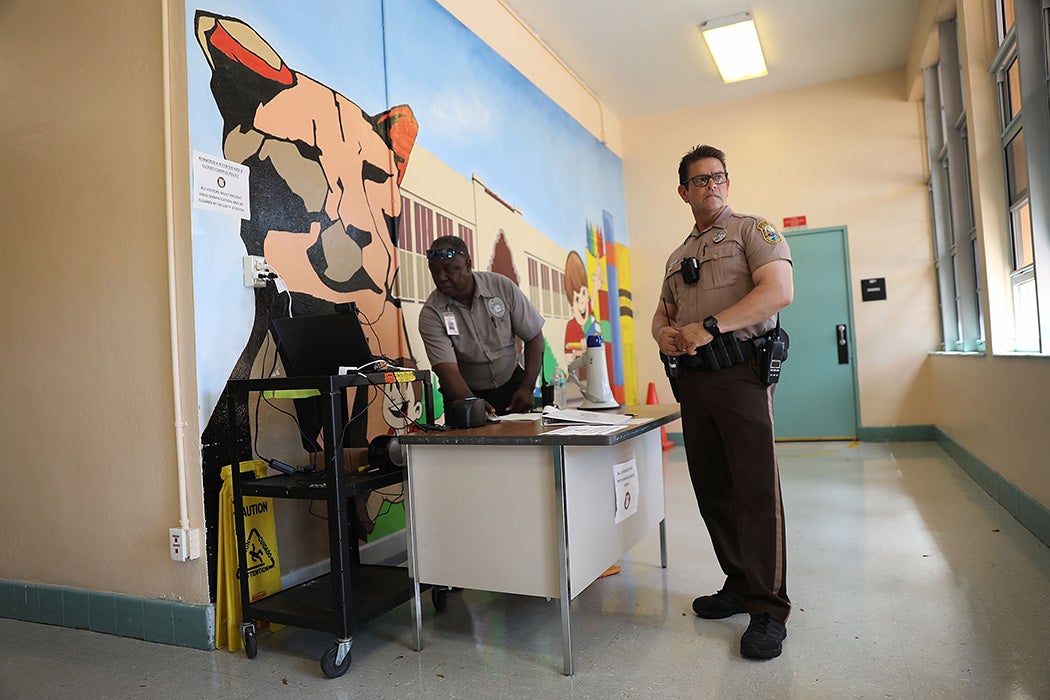In the weeks since the police murder of George Floyd, school districts across the country have cut ties with police departments. The shift has the potential to reverse a trend that’s lasted more than two decades, as law enforcement has become increasingly intertwined with education. In 2018, Joshua P. Starr, CEO of education organization PDK International, described what that looked like firsthand. He’s a former superintendent of school districts in Montgomery County, Maryland and Stamford, Connecticut.
Starr writes that the federal School Resource Officer (SRO) program, which pays for part of the cost of stationing officers in schools, started in the 1950s but didn’t catch on for a long time. In the mid-1970s, police officers were in only about 1 percent of US schools. That changed since the late 1990s, as school shooting incidents brought a wave of concern about safety. Today, 60 percent of schools have a police presence.
And, at least until recently, SROs were hugely popular. In a 2018 poll, Starr writes, 80 percent of parents favored posting armed police officers at their child’s school. That made superintendents like him cautious about airing “even the mildest criticism” of SROs,” he writes. “Privately, though, many district leaders will tell you that if they had a choice, they’d rather not have armed officers in the schools at all.” School administrators may have little control over the hiring or management of SROs.
“I’ve seen cases where students got into a fight and the principal responded by offering conflict resolution, only to learn that the SRO decided to charge the participants with a crime,” Starr writes.
In cases across the country, legal writer Stephanie Francis Ward writes, SROs have arrested students over offences as mild as flatulence or dress code violations. She describes one incident in Raleigh, North Carolina in which a student, who had been diagnosed with oppositional defiant disorder, cut in front of another student in the lunch line.
“A school resource officer reportedly grabbed the boy, 16, by the arm,” they write. “They boy pulled away, and the officer pulled his arm behind his back and handcuffed him in front of other students.”
The boy was suspended for three days. Upon his return to school, the legal complaint alleged, a group of students assaulted him, and the SRO responded by shooting pepper spray in his face while he was on the ground.
Weekly Newsletter
Starr and some education officials Ward spoke with advocated for ways to improve SROs, like helping them learn more about child development and having clear agreements between schools and police departments. But others argued for completely replacing the law-enforcement model. For example, in one Chicago school, Mariame Kaba, an educator and prominent advocate of police and prison abolition, helped create a “peace room.” Rather than punish students for misbehavior, teachers could recommend that they visit the room and work with volunteers trained in restorative justice techniques.
With municipal policies and public opinion on policing in flux, that could be a model more schools will investigate.
Editor’s note: This story originally stated that George Floyd’s death was a police shooting. Floyd died after a police offer knelt on his neck for over eight minutes.







